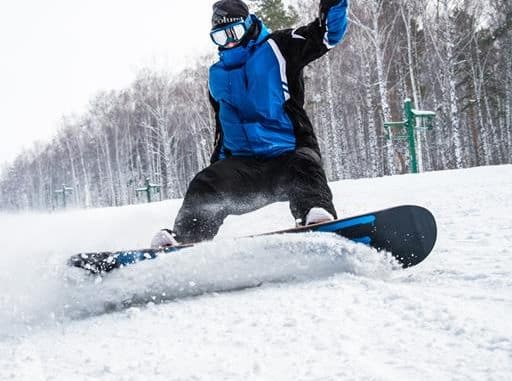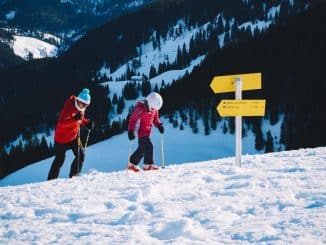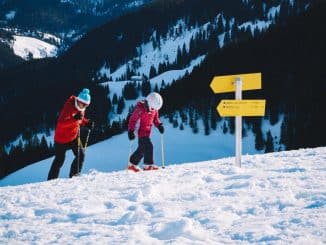
Snowboarding is a winter sport that entails standing on a board attached to a rider’s foot and descending a slope covered in snow. This is while wearing a specific boot attached to a mounted binding. Skateboarding, sledging, surfing, and skiing all influenced the creation of snowboarding. It was created in the 1960s and 1970s in the United States. It eventually became a Winter Olympic sport in 1998.
Snowboarding started in the 1920s when boys and men used clotheslines and horse reins to attach wooden planks from barrels to their feet and steer themselves downhill. An engineer from Michigan, US invented modern snowboarding in 1965 as a toy for his daughter by combining two skis and connecting a rope to one end to have control as she glided downhill. Snowboarding for beginners is a good read.
Snowboarding Types
FREERIDING
Freeriding is precisely what it sounds like: riding at one’s leisure in any terrain with only the mountain as a constraint. The pursuit of riding prominent peaks best exemplifies this sort of riding, but it isn’t limited to that. It’s popular to ride natural features and add freestyle elements to them. When trying to ride in remote regions, this riding technique is limited by access to mountains and threatened by the risks (avalanches, crevasses).
FREESTYLE
This broad word encompasses all riding when tricks are performed, whether in terrain parks, wilderness, or urban settings. Freestyle riding is a popular form of riding that continues to grow in popularity, especially with new features and tricks. One’s ingenuity limits its potential.
URBAN
The use of existing characteristics within or around urban and human-made landscapes characterizes this riding style. Handrails, ledges, parking structures, and walls, to name a few examples. Outside of resorts, these characteristics provide a riding playground. Riding has further advanced to such circumstances; street riding has accelerated in the previous several years. It is the most accessible kind of riding for many younger riders, and it is still growing.
HALF PIPE
This aspect of snowboarding, made famous by the last four Olympics, entails completing tricks while speeding through a prominent U-shaped snow feature. Snowboard halfpipe, which evolved from skateboard vert riding, has evolved drastically from its early days of riding natural gullies to today’s enormous pipe productions utilizing sophisticated snow machines and precision shaping. Riders can now ride faster, go more significant, and design new stunts thanks to larger pipes. The high time and financial expenses of building and maintaining lines and their limited accessibility represent a danger to their development.
BOARDERCROSS/RACE
Slalom, giant slalom, and boardercross are examples of this type of snowboarding. Boardercross is a BMX-style sport in which four riders compete along a course with jumps, berms, and other obstacles. Slalom racing is a timed event that takes place in a succession of gates. This subset of the sport thrives mostly in conjunction with other ski races. Despite its status as an Olympic event, its future is hampered by its inability to attract younger riders.
How much does a good snowboard cost?
You can spend as much or as little money on a snowboard as you wish, but a typical snowboard with soft bindings should cost around $400. For a total of $800, add more monies for accessories like boots, gloves, and goggles.
What distinguishes a decent snowboard?
The edge is shorter than the snowboard’s overall length. A longer effective edge provides stability and good grip in turns or when descending slippery slopes at high speeds. A board with a shorter effective edge is easier to turn and spin.
When is it too late to learn to snowboard?
You can never be too old to learn, especially if you’re 25 years old. You may not have the years in your body to master double corks or 270s onto/off double kinks, but if you put in the time, you may become an outstanding rider in a few seasons.



